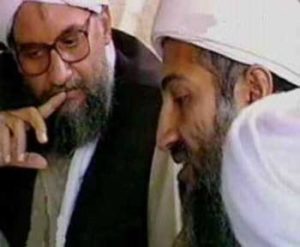Continuing…
- It is no accident that the World Trade Center was the main object of the 9/11 attacks since it was the symbol of U.S. economic hegemony. Bear in mind that the attacks had been planned in the ’90s during the height of U.S. economic power.
- The strikes were meant to polarize Muslims as well as the enemy’s population. They were also intended to push the U.S. into overreacting and committing errors.
- Why didn’t all four strikes on 9/11 hit the Pentagon alone? Why did al-Qaeda attack civilians and the WTC? We need a new strategic framework to understand its reasoning. Three things needs to be considered.
- First, when the U.S. attacks a country, it abides by the principle of the ends justify the means. This is one of the foundational principles of American pragmatism. Studies that came out after 9/11 really brought this mindset to the fore. But, according to a principle of international relations, it is the right of oppressed people to respond in kind. Al-Qaeda decided that there was no difference between civilian and soldier among the enemy, especially since is a democracy. Since U.S. citizens vote, they are responsible for U.S. policies and thus subject to terrorism. This was the first strategic breakthrough of AQ.
- Second, although the U.S. is militarily superior to everyone else, it sometimes uses asymmetrical warfare against its enemies. In response, AQ decided to make use of it as well. Asymmetrical warfare is part of guerrilla warfare and AQ added terrorism to its asymmetrical toolkit.
- Third, the U.S. began promoting fourth generation warfare in ’89 after the collapse of the Berlin Wall. Fourth generation warfare means that there is no longer a battlefield; rather, the society of the enemy is the theater of conflict. 4GW puts emphasis on small, flexible forces. The goal is to destroy the enemy from within and the list of targets iss expanded to include the enemy’s culture and popular support for the war.
- For fourth generation warfare to succeed, it is necessary to correctly identify the enemy’s strategic center of gravity. In this type of warfare, there is no delineation between war and peace and no clear battlefields. In these circumstances, differences between civilian and soldier are erased.
- The idea of the center of gravity has changed the conceptual framework of warfare. In any war, you identify the enemy and identify the point on which you’ll concentrate all your effort to achieve victory with the least amount of effort and losses. This point is called the center of gravity.
- In traditional warfare, the center of gravity was the opposing army. If a country lost its military strength, it was unable to continue fighting and consequently lost the war. But the development of weapons and the growing complexity of the means of control in modern societies means that the center of gravity is now more flexible and elusive. It’s not just material power. The U.S. won all its battles in Vietnam but lost the war because public opinion turned against the war. “In other words, America lost the political will to pay the costs of the war and did not consider the hypothetical return on investment commensurate with the expected loses.”
- The center of gravity is certainly not the enemy’s point of weakness such that a strike at it will end everything. Clausewitz, who invented the term “center of gravity,” had difficulty defining it, as do contemporary American military theorists. The meaning slides between an enemy’s point of weakness or its point of strength. In Clausewitz’s work, it is evident that the concept is not confined to a place, a potentiality, or a fixed source of power. Rather, it is the point of equilibrium from which the enemy derives the potentialities of power and the will to fight.
- Identifying the enemy’s correct center of gravity is half the battle according to the American colonel, Antulio Echevarria. He believes that the center of gravity in Clausewitz’s original text is judged according to its impact on the whole, not according to its potentialities and capabilities. In other words, it is the specific point that, if struck sufficiently, will have a decisive impact on the whole body. On this basis, Echevarria suggests redefining the term as focal points which inhere to the combatant’s complete structural order and which bring it strength from several sources and give it purpose and direction. [To quote directly from Echevarria: “A center of gravity is the one element within a combatant’s entire structure or system that has the necessary centripetal force to hold that structure together.”] He also believes that an enemy’s center of gravity should be continually reassessed due to its temporary and transitory nature.
- In total wars, the strategic center of gravity is a combatant’s economic-industrial potential. In limited wars, it is the military-security potential. National leaders are not centers of gravity because they themselves do no have the potential to defeat the enemy. They are only catalysts.
- Now to return to the strikes on the U.S. center of gravity. Firstly, the center of gravity for the U.S. during WWII was its industrial complex.
- Secondly, In the past two decades, U.S. financial centers seemed to be its center of gravity. They absorbed the liquidity of the world and its interest.
- Thirdly, the U.S.’s primary means of attracting funds is its capacity to impose its will through force on other countries and its belief that it can’t be defeated because of its geographical and geopolitical protection (it’s surrounded by oceans) and its military dominance.
- Fourthly, hitting the U.S. homeland, despite all the strengths we mentioned, demonstrated the country’s brittleness, which gave reassurance to the U.S.’s enemies, especially in the Islamic world.
- Fifthly, the strike on the WTC was not enough to destroy the world’s confidence in the U.S., even though it shook one of the pillars of its control of the world.
- Does all of this mean that AQ committed the mistake of Japan in WWII, creating its own Peal Harbor? In other words, did it provoke the giant without finishing it off and now it must bear the consequences?
- There is a difference in both cases. Japan was a small, isolated, maritime nation that had no resources or raw materials. Since Japan fought a traditional war, its defeat was certain given that it could not match or destroy the U.S.’s center of gravity [its industrial base]. AQ, on the other hand, stretches over continents and its resources are from the umma; these resources have been barely affected. AQ’s mode of fighting is new and not one to which the U.S. is accustomed.





2 Responses
Parts of this argument are reminiscent of a piece that Abu Ubayd al-Qurashi wrote several years ago.
Do you remember which one?